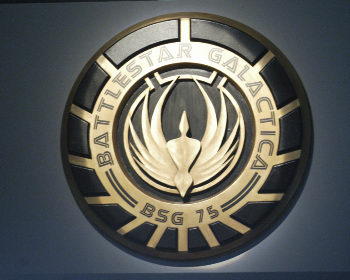
If there was an area where the 2003 production excelled, it was in the application of CGI technology in the design and creation of the various ships portrayed. While some ship designs were less popular than others, they still show the impressive talent and ability of the designers and creators.
The Cylon Basestar
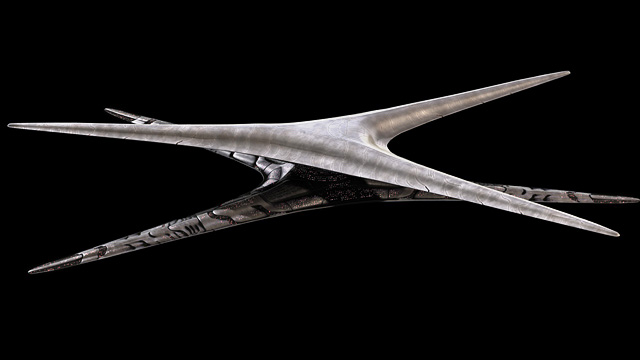
The Cylon Basestar was designed by Eric Chu, who was working at the time with Zoic. Eric provided a totally new look, approaching the design based on the ship’s name, rather than re-designing it from the traditional series’ design.
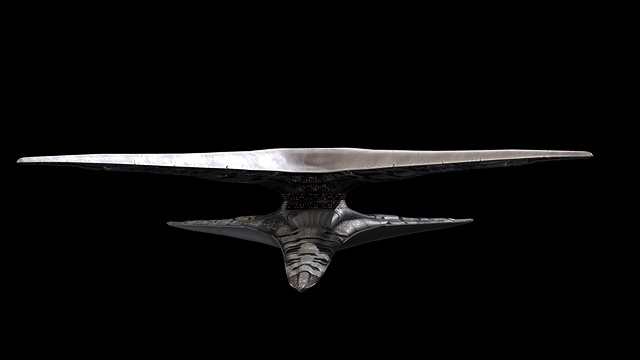
This warship was shown, in brief glimpses, throughout the miniseries, although the only clear representations of the ship were revealed through shaky camera shots during the end battle sequence. They were also seen frequently during the weekly series’ run. The mothership of squadrons of Raider fighters, which launched bat-like from the underside of the ship, the Basestars also served as massive missile platforms, launching volleys of missiles at the Galactica.
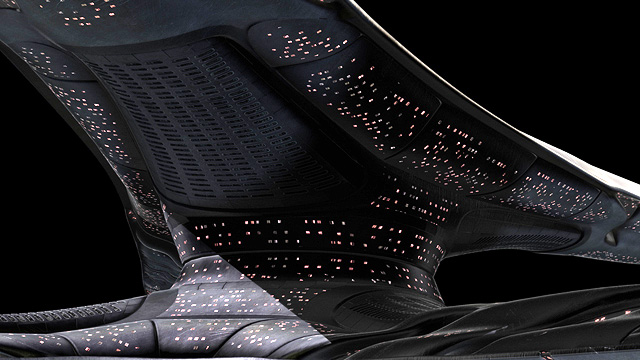
Computer modeler Jose Perez modeled the Cylon baseship to demonstrate a starship of respectable size. Showing a heavily armored hull on its exterior, the inner sides of the mothership contain the details that reveal the ship’s actual size.
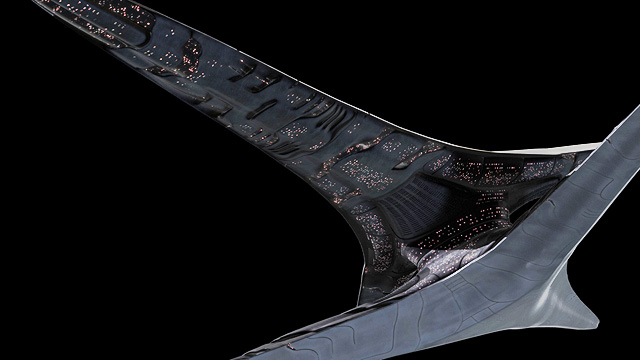
The Battlestar
The 2003 Battlestar Galactica was a radically changed design, bearing only a superficial resemblance to the original Galactica. While it did have some basic similarities, the 2003 Galactica had a ribbed, partially-armored exterior, and had what fans most often described as a more Star Trek-like look.
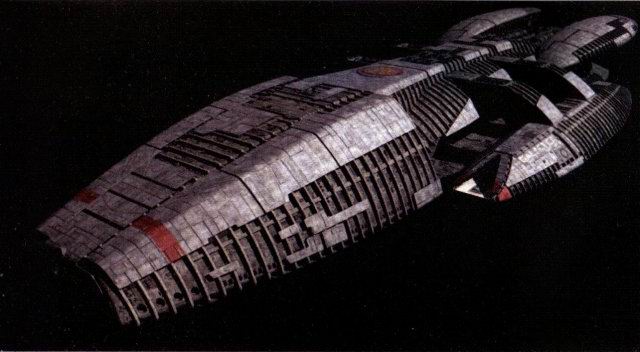
In the early stages of the production, the design team intended the Galactica to be a faithful representation of the original series. This was changed about a third of the way through the design process when the producers ordered the old design put aside and sought a “new look” to further remove it from its predecessor production.
This design had retractable landing bays, sectionalized corridors and Star Trek-styled displays embedded within a bridge that most closely resembled the control center of a modern-day submarine.
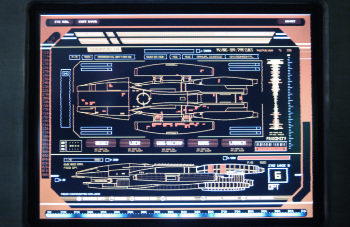
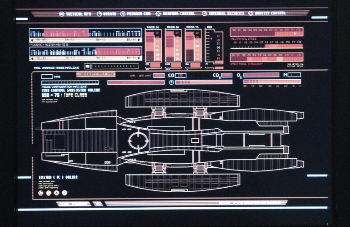
This Galactica bridge showed little better technology than our present real world capabilities. Among the ordinary items on this set were corded telephones, which were a welcome, if unintended, connection to the original 1978 production (which used similar phones, although those were used in 1978 simply because they were the technology of the time).
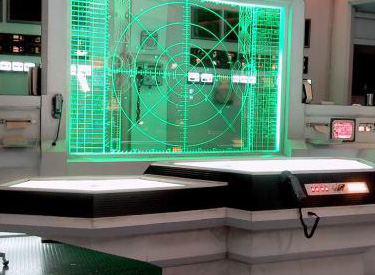
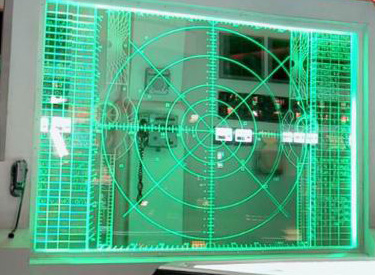
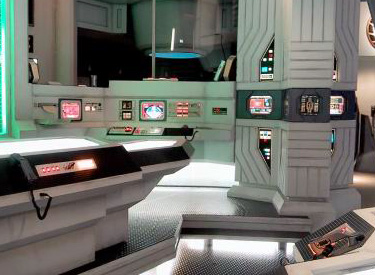
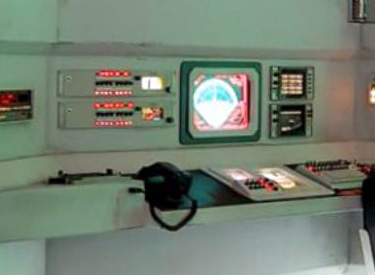
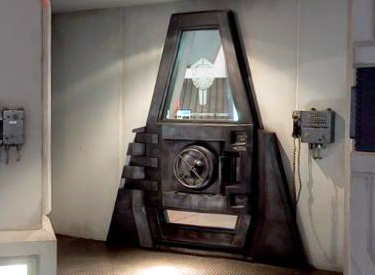
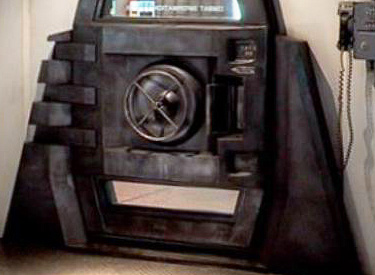
The bridge controls and displays were designed to simulate a contemporary military watch center.
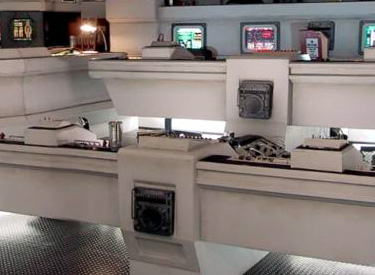
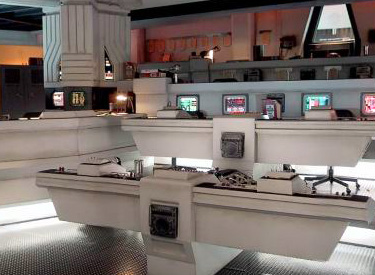
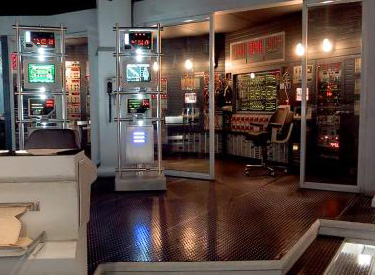
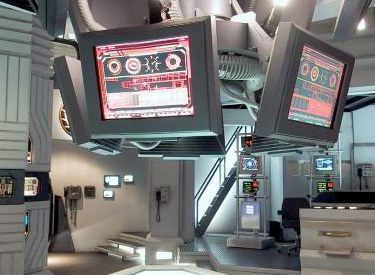
Much of the story in the miniseries occurred in the Galactica’s landing bay. The miniseries landing bay had elements similar to the original series, with an improved rendition of the Viper launch tubes. In all, the landing bay was the most Galactica-like of any of the interior sets.
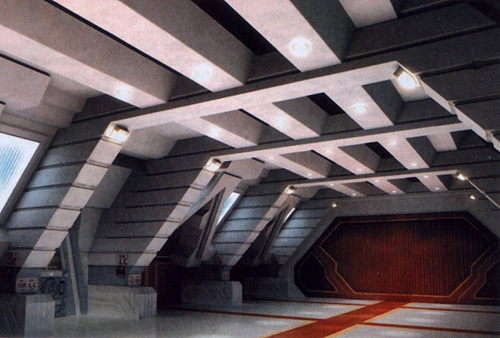
The 2003 series landing bay was constructed to more closely resemble the flight operations deck of an aircraft carrier, with the core of the action centering around the technicians repairing and maintaining the fightercraft. In this area, the 2003 BSG did present a more realistic view than the 1978 series, which virtually ignored the work crews needed to keep squadrons of fighters operating.
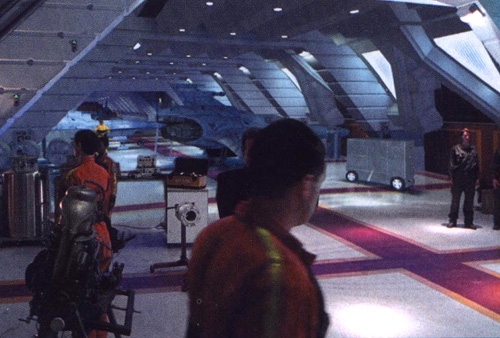
In all, few elements of the excellent designs shown in the old series were used for the new Galactica. The ship was functional, but lacked the unique charm of the original.
THE COLONIAL VIPER
The 2003 miniseries introduced two distinct Viper designs. The older of the two, the Mark II, were very similar to the 1978 Viper designs. At the beginning of the miniseries, these were relics, museum displays that were dragged back into service during the Cylon nuclear attacks when the newer, more heavily computerized “Mark VII” models fell victim to Cylon trickery. The Mark II Vipers were a bit more sleek and much cleaner-looking than the 1978 design, with a reduced tail fin and more streamlined engine intakes intended to give the Viper a more conventional US Navy fighter look. This look was amplified by the NATO caution labels, emblems, nomenclature and off-white paint jobs. The pilot helmets and uniforms also took on a more generic look than the unique designs from the 1978 series.
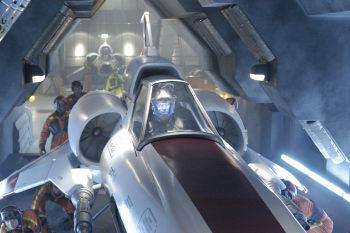
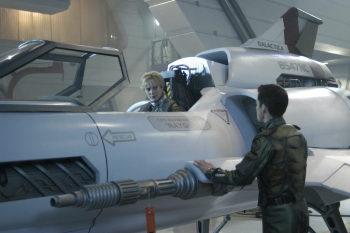
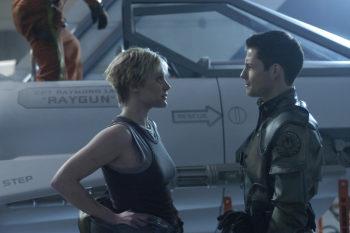
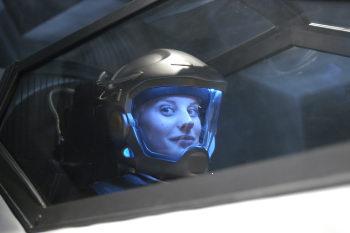
One benefit of modern set construction and CGI that the miniseries took advantage of is that they were able to create a much more detailed sequence of the launching routines for the Vipers.
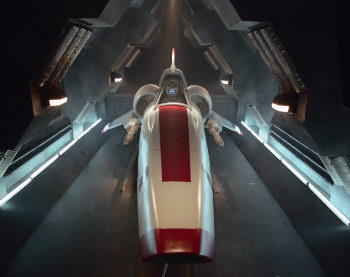
From a visual perspective, the Mark II was possibly the most acceptable element of the miniseries for fans of the 1978 series, even though these Vipers fired bullets instead of energy bolts.
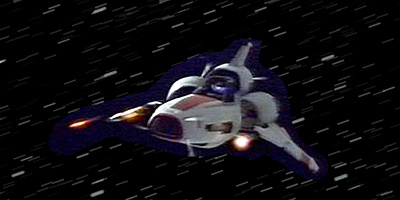
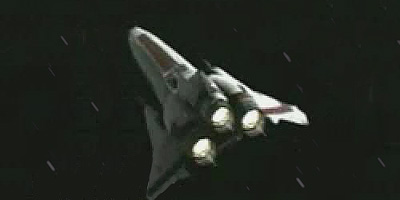
The newer Viper design, the Mark VII, was reportedly a rejected design from the DeSanto/Singer revival attempt forced on the designers of this Battlestar Galactica primarily because it was unlike anything seen in the original 1978 series. These Vipers had advance avionics and computer-controlled systems, and could outfly and outfight any previous models. The Cylons were, of course, able to take these down by hacking into the central computer control systems and basically leave them adrift to be destroyed at their leisure.
The design itself, while reminiscent of the classic Viper, was not largely embraced by fans of the original series.
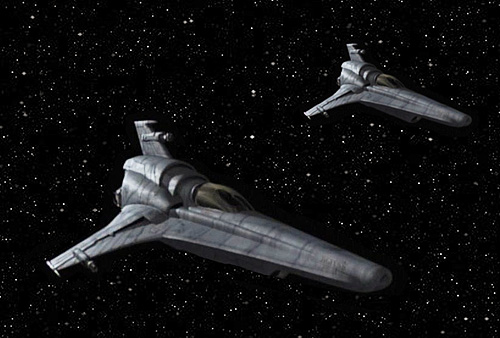
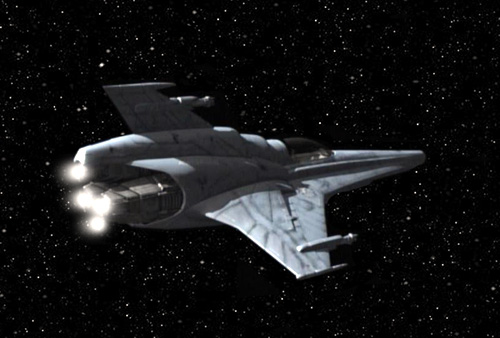
THE CYLON RAIDER
Rather than adapt the classic oval design of the Cylon Raider, because the producers wanted to distance this production from the original series as much as possible, the decision was made to go for a totally new look. Concept designer Eric Chu developed a new design to coincide with the more alien, bug-like qualities of the new Cylon Centurions.
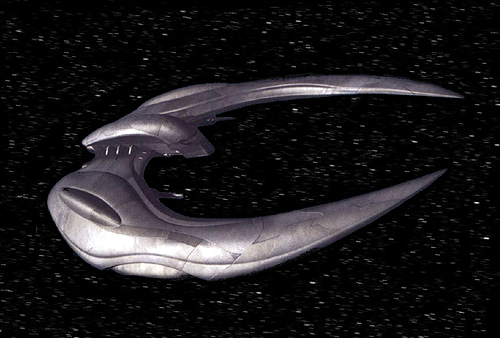
Following instructions laid down by writer/producer Ron Moore, this raider was designed to have a visual similarity to the new Cylon Centurion, with its central ‘cockpit’ specifically modeled after the head, complete with an oscillating red eye. Although the oscillating eye worked well with the centurions, its implementation as a fighter’s scanning and transmitting device didn’t.
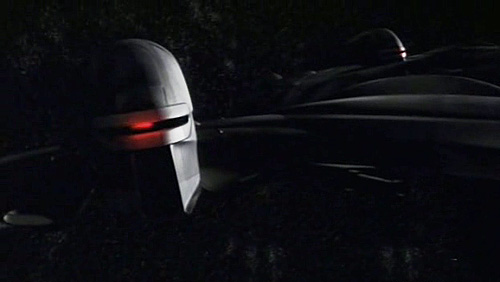
In its final form, the 2003 Cylon raider served as a robotic missile launcher. While it could and did engage in fighter-to-fighter combat, its primary role was to launch missile barrages against a target (the ships of the Colonial fleet). It missile payload could also include tactical nuclear missiles. Among fans, this design also evoked comparisons with other fighter craft designs from other sci-fi universes and video games.
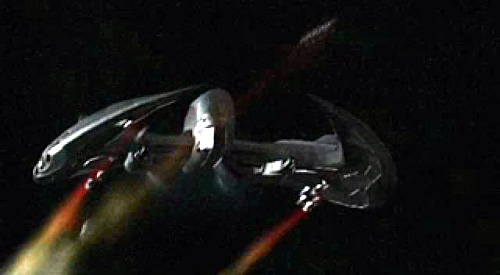
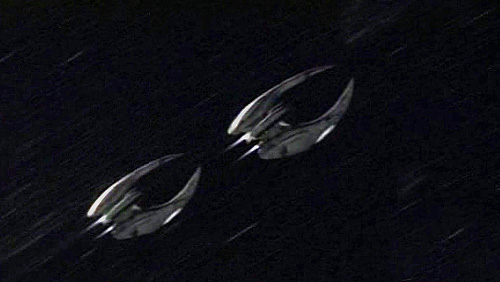
It is interesting to note that none of the weapons systems on any of these warships, either offensive or defensive, involved energy weapons; all were conventional projectile weapons, using modern (21st Century) terrestrial technology in their design and deployment.
Written by John Pickard